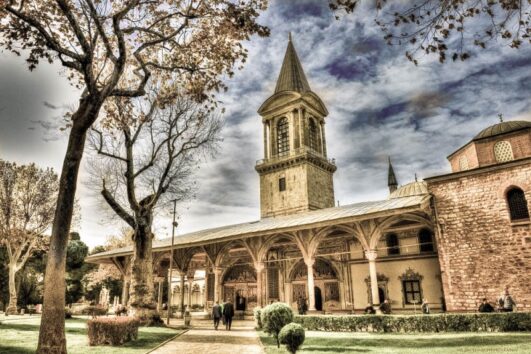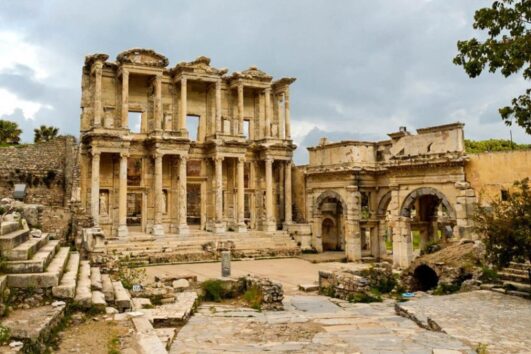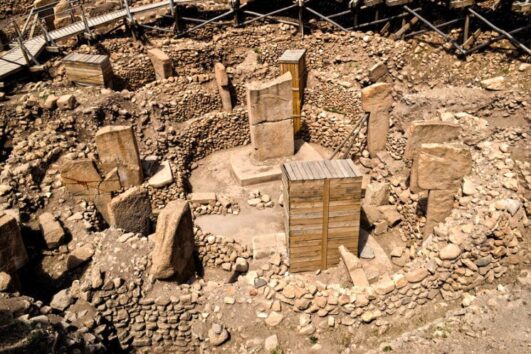An abundance of historical places to visit in Turkey makes it a travel magnet for fans of previous eras. From the east to the west, remnants of past empires and civilizations sit in among towns and villages. Some famous historical places receive more admiration and visitors than others do, though. This is mostly because of their ease of accessibility or in some cases, extensive excavation work that boasted its appearance. Of course, their connection to the bigger historical timeline of the world is equally important because events that occurred changed the course of the world for everyone.
One prime example of this is Gallipoli, a favorite daytime trip from Istanbul for New Zealanders and Australians. This intense battle altered events of World War 1 and led the way to the Turkish War of Independence. Unfortunately, the UNESCO site of Hattusa, the former capital of the Hittite empire, in the Anatolian region, receives only a few visitors just because they did not conquer half the world like the Romans or Ottomans did. Either way, when visiting the country, history lovers will be delightedly enthusiastic by the abundance of historical landmarks and sites. For first time visitors, we have listed the most popular places to visit.
4 Historical Places to Visit in Turkey
1: Old Istanbul
Often marketed as a modern and cosmopolitan destination, Istanbul, the largest city in Turkey contains an old district that is a gem of a landmark. Depicting both the Ottoman and Byzantine empires, iconic landmarks include the former church, mosque, and museum of Hagia Sophia and the majestic Sultanahmet Mosque with its unique six minarets. Topkapi Palace, the first home of the Ottoman sultans, receives hundreds of visitors a day, all eager to see the jewel rooms, armoury, sultan’s bedrooms, and harem.
While around the corner, the Basilica Cistern, accessible by a flight of stone stairs was the source of water for former Constantinople. Lastly, Istanbul Archaeological Museum, a highly admired establishment contains many artefacts from civilizations around the world. A one-day whirlwind tour takes visitors to all the main landmarks including the Hippodrome, but most people prefer to take their time and stretch it to two days so they can also visit the Ottoman Grand Bazaar, one of the largest markets in the world.

2: Ancient Ruins of Ephesus City
Sitting on the Aegean coast, the old Greco-Roman city of Ephesus reflects what daily life was like in Rome’s second largest city. Wealthy citizens lived in Roman terrace houses, sitting on the Bulbul Mountain that these days display excellently preserved mosaics from that time. Temples highlight the beliefs of pagan citizens while a fish carved into a stone showed the way for discreet Christians to find safe houses.
Nearby, gladiators fought to their death in a 25,000-seater Hellenistic theatre where in later years, the mood turned lighter when Pavarotti, Sting, and Elton John held concerts there. One of the most photographed landmarks, however, is the Celsus library that was the third largest in the ancient world containing more than 12,000 scrolls. Ephesus is within the Seljuk district that hosts many more historical places to visit including the house of the Virgin Mary, Saint John’s Basilica, Isa Bey Mosque, and the Temple of Artemis.

3: Cappadocia
The central Anatolian region of Cappadocia contains marvellous collections of historical places to visit in Turkey. A stunning assortment of 10th, 11th, and 12th-century cave churches in the UNESCO Goreme Open Air Museum should be first on your list. While their exterior architecture may seem uninteresting and bland, the interior Biblical frescoes garner immense admiration from everyone that sees them, religious or not. If the Goreme Museum does not fill your appetite for ancient cave churches, Ihlara Valley in the Guzelyurt district will.
Formed thousands of years ago, a man-made trail through the gorge leads visitors to churches carved out of the walls that enabled citizens and newly practising Christians to hide from enemies. Cappadocia also boasts about hundreds of underground cities of which Derinkuyu and Kaymakli are the biggest and best. Used by citizens to hide from invading forces, communities carved homes out of soft volcanic rock with the aim of living within them for up to six months at a time. Chapels, schools, kitchens, wine cellars and places to store animals, are scattered over numerous levels all connected by a network of tunnels. If you are not claustrophobic, touring Cappadocia’s underground cities is a surreal experience.

4: Lycian Way
Rather than be one particular place, the Lycian way is a collection of ancient ruined cities that certainly fulfil and exceed high expectations of history lovers. Stretching from Antalya to Fethiye, the 540-kilometer trek takes a month to walk in one go, but most people do it in stages so they can avoid high summer temperatures from July to September. Alternatively, if walking is not your passion, transport to access all historical sites is frequent and cheap, or following the D400 coastal road makes an excellent road trip for families.
All ancient cities belonged to the former Lycian civilization that was eventually absorbed into the Roman Empire. Known as philosophers, artists, and creators, they also formed the impressive Lycian league, one of the first democratic unions. The ruined city of Xanthos and its partnering site of Letoon are also UNESCO World Heritage sites. Other impressive ruins include old churches on Gemiler Island, the former sea trading port of Phaselis, and Patara that is also home to Turkey’s longest beach. At the end of the trek in the Fethiye district, visitors enjoy seeing Kayakoy ghost village that was formerly home to Greeks and Turks living side by side before the Treaty of Lausanne in 1923.

You May Also Like…
Gobekli Tepe is not one of the most popular historical places to visit in Turkey, because it is outside of famous tourist areas, but it has garnered much admiration from historical circles. The reason being is that it is the oldest manmade structure in the world, dating back 12,500 years. The temple with its t-shaped limestone pillars has attracted worldwide attention from historians and scholars studying mankind.

Further Reading
Our Turkey Travel Blog: Everything you need to know about a visit to Turkey, including food, drink, souvenirs and places that make a memorable holiday.
Turkey Package Tours: All the historical places to visit in Turkey, which we have listed here, are featured on our package tours of Turkey. Find out more about them, see photos, and let us help you plan the trip of a lifetime to Turkey.





